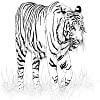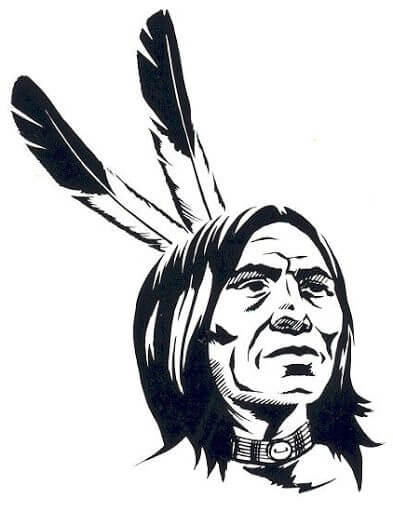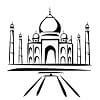- Home
- Holiday Ideas
-
-
- Choose Your Traveling Theme
-
- Adventure Tourism
-
- Cultural Tourism
-
- Tour Packages
-
-
- Packages by State
-
- Holidays by Interest
-
- Popular Tour Packages
-
- Fair And Festivals
-
- Ayurveda And Yoga
-
- Offers
-
- Destinations
-
Mussoorie
Queen of hill stations
Mussoorie
A very popular summer getaway, the quaint hill station of Mussoorie, in Uttarakhand, remains shrouded in mist, and when it clears, it reveals a pleasant view of the snow-capped Himalayas and therefore the green Doon Valley. Fondly mentioned because the queen of hill stations, Mussoorie’s landscape boasts spectacular natural sights like waterfalls and hills, and also invites adventure lovers and thrill seekers to explore its terrain with paragliding, trekking, camping etc. Mussoorie is dotted with temples that bring peaceful spiritual retreats. the luxurious locals of Capitol Hill station provide great avenues for nature walks.
...Mussoorie is additionally reputed for brewing fine alcohol. In fact, during British era, it had been home to many well-known breweries like McKinnon’s brewery that exported wine to England within the early 1880s. it’s said that as English officers flocked to its cooler climes, they brought with them their beer and wine. And then, a couple of of them found out breweries here, supplying to cantonments across the country. A legend says even Ghalib, a noted Urdu poet, was a connoisseur of wine from Mussoorie.
Today, while these breweries may not exist, Mussoorie may be a good place to relax by a fireplace and sip a fine wine.
Mussoorie was established by British in 1823 and imprints of colonial architecture can still be found in its various structures like churches, libraries, hotels and summer palaces. Legends say the name Mussoorie springs from ‘mansoor’, a shrub that grows here. The scenic locales and pleasant weather of Mussoorie invited many to form it their home, Sir George Everest, who helped British measure the peak of the world’s highest peak Everest (later named after him), being one among them.
After British rule ended, Mussoorie became popular when Indian personalities, including political leaders, authors, artists and Bollywood superstars, made Mussoorie their home. the foremost noted among these is author Ruskin Bond, who still lives here and may often be spotted taking long walks in forested glades.
How to get there ?
By Air
The nearest airport is the Jolly Grant Airport in Dehradun, which lies approximately 54 km away.
By Road
Mussoorie is well-linked with a network of bus services, which includes private tour operators as well as state transport corporations.
Rail
There are numerous trains connecting New Delhi with Dehradun, such as the Shatabdi Express, the Mussoorie Express, and the Nizamuddin AC Special.
Attractions

Dhanaulti
Situated at an altitude of two ,286 m above water level , Dhanaulti may be a natural retreat that boasts tall trees and rich grasslands. It shares its west-side border with Dehradun and is dotted with alpine forests and aesthetically pleasing eco-parks, the foremost popular of which are Amber and Dhara, just 200 m aside from one another . Another important eco-tourism site is that the government-owned Aloo khet / Potato Farm – an area worth a visit to behold pretty sunrises. the simplest time to go to Dhanaulti is winter when the place turns into a postcard-perfect wonderland.
Tourists also can visit Thangdhar, on the outskirts of Dhanaulti. Offering a number of adventure activities like trekking, hiking , biking and camping, the place invites thrill seekers from far and wide. Dhanaulti is that the base point for several treks into the Himalayas, particularly within the Tehri region of Garhwal. The more popular treks take one to Chandrabadni, Surkanda Devi and Kunjapuri.
Apart from being a well-liked trekking site, Dhanaulti houses Barehipani and Joranda Falls, which function ideal picnic spots. you’ll also head to the Dashavatar Temple that’s dedicated to Lord Vishnu. it had been inbuilt the Gupta period and is taken into account together of the earliest known Panchyatan temples in North India. Its walls depict scenes from Vaishnava mythology. One also can find a 16th-century fort by the name of Deogarh that houses palaces and artistic Jain temples.
Jwalaji Temple
Dedicated to Goddess Jwala Devi, believed to be one among the sorts of Maa Durga, the Jwalaji Temple invites devotees from everywhere the region. The sanctum sanctorum of the temple houses an idol of Jwala Devi, who is believed to bless and grant all the needs of her devotees. The shrine is surrounded by a lush green forest cover, and from here one can get astonishing and panoramic views of the Shivalik range of mountains, the Yamuna river and therefore the Doon Valley. The temple is thronged by pilgrims during navratras (a holy nine-day festival) because it is believed to be specially auspicious for offering prayers and seeking penance for sins.
Lying on the outskirts of Mussoorie, the temple is perched at a height of about 2,240 m, on Benog Hill. it’s situated about 56 km from Dharamsala and 35 km from Kangra.


Sir George Everest House
Built in 1832, Sir George Everest’s House and Laboratory, also referred to as Park Estate, may be a popular heritage site. This popular house was from where Sir George Everest helped British measure the peak of the world’s greatest peak, Mt Everest. For his contribution, the height that was earlier called Peak XV, was named after him. the situation of the home is strategic and at the time of Sir Everest, it had been used as an observatory to look at mountains that demarcated the boundaries of British India. Today, the home is being maintained by the govt of Uttarakhand and is hospitable tourists all year round. From here, one can get a spectacular view of the Doon Valley and therefore the Himalayas. it’s located at a distance of about 8 km from Mussoorie.
Surkhanda Devi Temple
Located about 8 km from Kanatal, at a height of just about 10,000 ft, Surkhanda Devi Temple is one among the foremost popular tourist attractions in Mussoorie. it’s one among the 51 shaktipeethas (devotional shrines where the severed body parts of Goddess Sati fell) within the country. As per legend, Goddess Sati immolated herself in her father’s yagya fire, when he insulted her husband Lord Shiva by not inviting him to the yagya. Bereaved and enraged, Shiva carried the body of Sati and performed tandav (a dance of cosmic destruction). to prevent him from annihilating the whole universe, Lord Vishnu severed the body of Sati in 51 parts together with his chakra. Some body parts of Sati are believed to possess fallen at this spot and thus it’s considered as a shaktipeetha.
Owing to its architectural excellence and spiritual prominence, the temple invites devotees and tourists alike. per annum within the months of May and June, Ganga Dussehra festival is widely known with much enthusiasm.

WANT TO RENT A CAR IN INDIA ?
Choose Your Traveling Theme

 TOUR BOOKING
TOUR BOOKING















